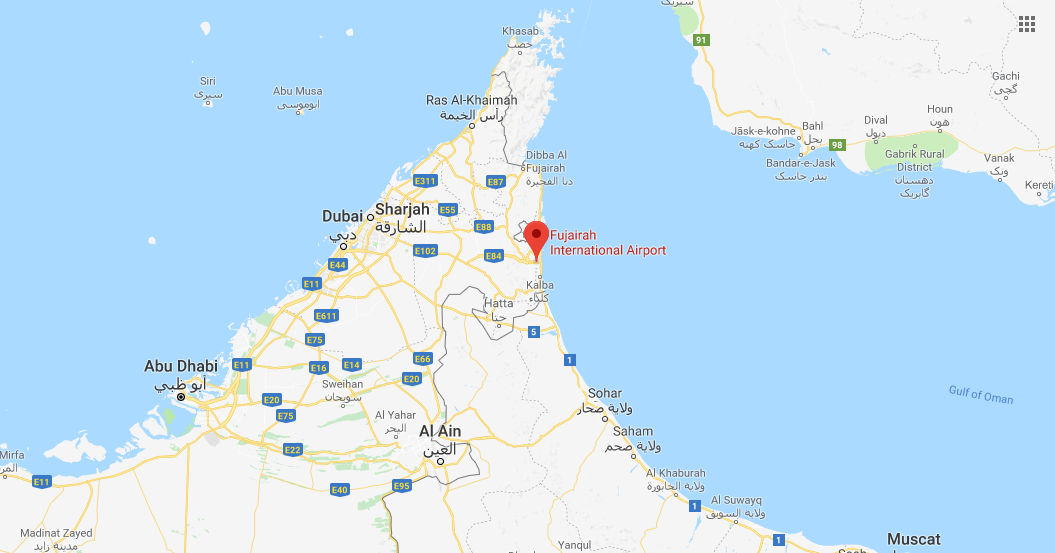An emirate of 200,000 people on the Gulf of Oman, part of the Indian Ocean (and the only one), Fujairah is well-known for its glamorous cement, stone crushing and mining industries, and its comprehensive social housing provision.
Employment opportunities are almost entirely controlled by the government - few entrepreneurs open businesses there, and the government prohibits foreigners from owning more than 49% of one, though that is pretty much the same as in Dubai, but neither can foreigners buy land. It might as well be on a different planet from the City of Gold and nearby Abu Dhabi, which props Fujairah up with federal grants.
Fujairah does have some things going for it. There is a successful Free Trade Zone, based on the one at Jebel Ali in Dubai, and a small but thriving port which also harbours a global-scale fuel bunkering facility, while the emirate's ruler, His Highness Sheikh Hamad bin Mohammed Al Sharqi, is committed to making the most of what Fujairah offers, and is focused on major tourism projects featuring five-star hotels.
MAP - Fujairah is one of the seven emirates that make up the United Arab Emirates, and the only one of the seven that has a coastline solely on the Gulf of Oman and none on the Persian Gulf Source: Google Maps
Source: Google Maps
Tourism to the lesser emirates in general has been increasing, with the attraction being their simple rugged beauty and in Fujairah's unique case a mountainous terrain (the Hajar Mountains) and even some Icelandic-style hot spring baths, all of which is juxtaposed with the desert maelstrom of what is regarded by some as a latter-day Gomorrah, 170 km away along the Sheikh Khalifa highway. There are a handful of shopping malls, but nothing to keep owners of those in Abu Dhabi and Dubai awake at night.
But much of that tourism is from the rest of the United Arab Emirates (UAE) rather than from further afield, for whose inhabitants it offers a weekend break, with decent beaches, some adventure tourism (scuba diving, four-wheel drive vehicles, and mountain trekking) and a little history.
This growth commitment from the top means developing the Department of Civil Aviation-owned airport, and according to the CAPA - Centre for Aviation Airport Construction Database there has been some piecemeal development during the last decade or so, involving mainly works to facilitate an increase in cargo and MRO operations and including the construction of a taxiway that could be used as a contingency runway while the existing one was closed for resurfacing and widening.
For many years a hill at one end of the runway was an impediment to expansion but that problem was resolved. There is now a 3750m x 45 m runway, capable of handling all freight aircraft and others that might land for maintenance work. But there are precious few scheduled or charter flights bringing tourists directly into this new five-star domain and gateway to a rugged wilderness.
However, things may be about to change. The airport has just awarded a USD180 million contract to Orascom Construction and its JV partner Al Sahraa Group to expand its facilities. The project will include a new air traffic control tower, the further extension of the existing runway to accommodate the Airbus A380, a new emergency runway, rapid exit taxiways and airport special systems.
These improvements might only facilitate enhanced cargo and MRO operations - after all there is no mention of terminal improvements in this impressive contract, but perhaps it is time for the emirate to seize the bull by the horns and make a serious attempt to attract foreign tourists. The infrastructure is now largely in place to do so and it is regarded as being a safe place to visit.
Back in 2013 the airport made a statement that indicated clearly that it wanted to attract tourists from the Gulf Co-operation Council area at least, with connections to Bahrain, Kuwait, Saudi Arabia and Qatar. Also that it might seek to benefit from the then forthcoming runway closure at Dubai International (which, as it happens, is being repeated in 2019). Not much seems to have happened.
What is really needed is a professional global DMC to promote the emirate. But the question is, do they really want to be promoted?
Perhaps the emirate should take a close look at Oman, just down the coast and once equally ignored by the tourist masses but with much the same 'wilderness and history' offer. The 'new airport' - a new 40-gate terminal and ATC tower - at Muscat International Airport opened on 20-Mar-2018, capable of handling 12 million ppa. It should be an aspirational benchmark in Fujairah.
